Home / UX processes / Interview process
Interview process
A client asked the design studio to conduct interviews of stakeholders and future clients. I documented our work process in order to use similar setups for possible future projects and clients.
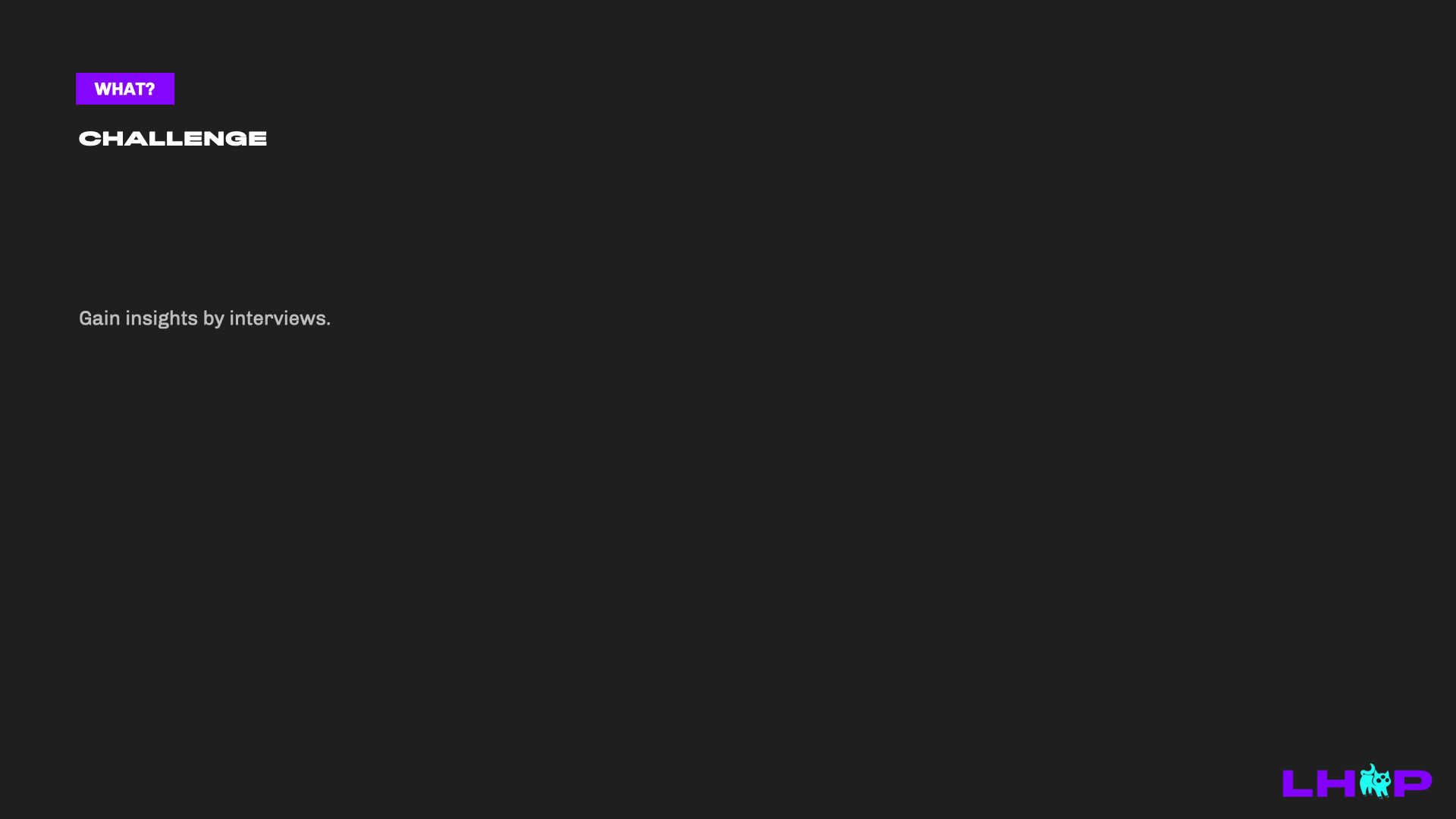
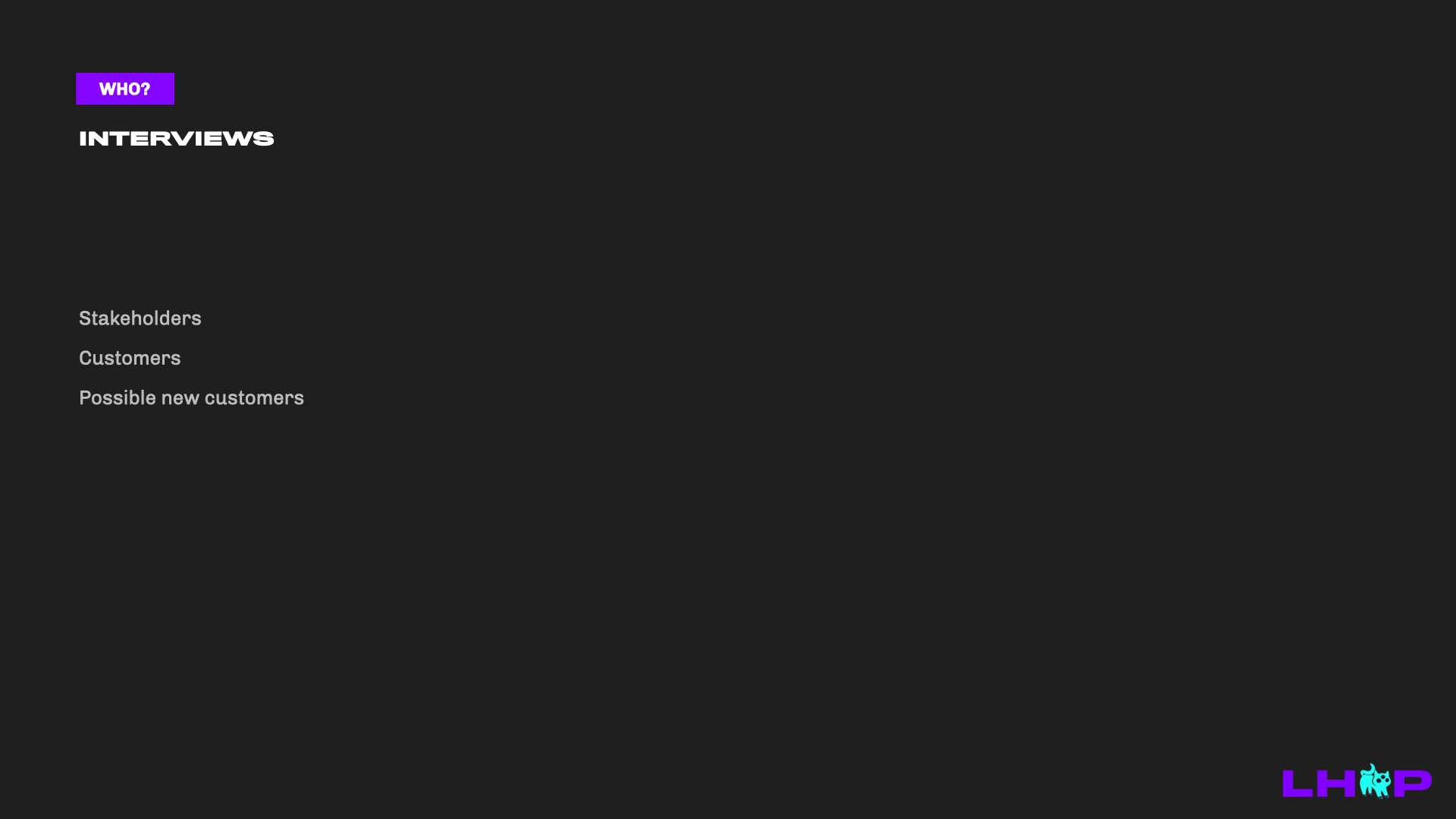
What and who?
Consider both the participants and the objectives of the research. Identify the right users to interview, those who represent the target audience and have relevant experience with the product or service. Before the interview, define clear goals and key topics to explore, ensuring questions are unbiased and open-ended. Create a comfortable environment where participants feel at ease sharing their thoughts.
- What are you going to do?
- Why are you doing the interviews?
- Who are you interviewing?
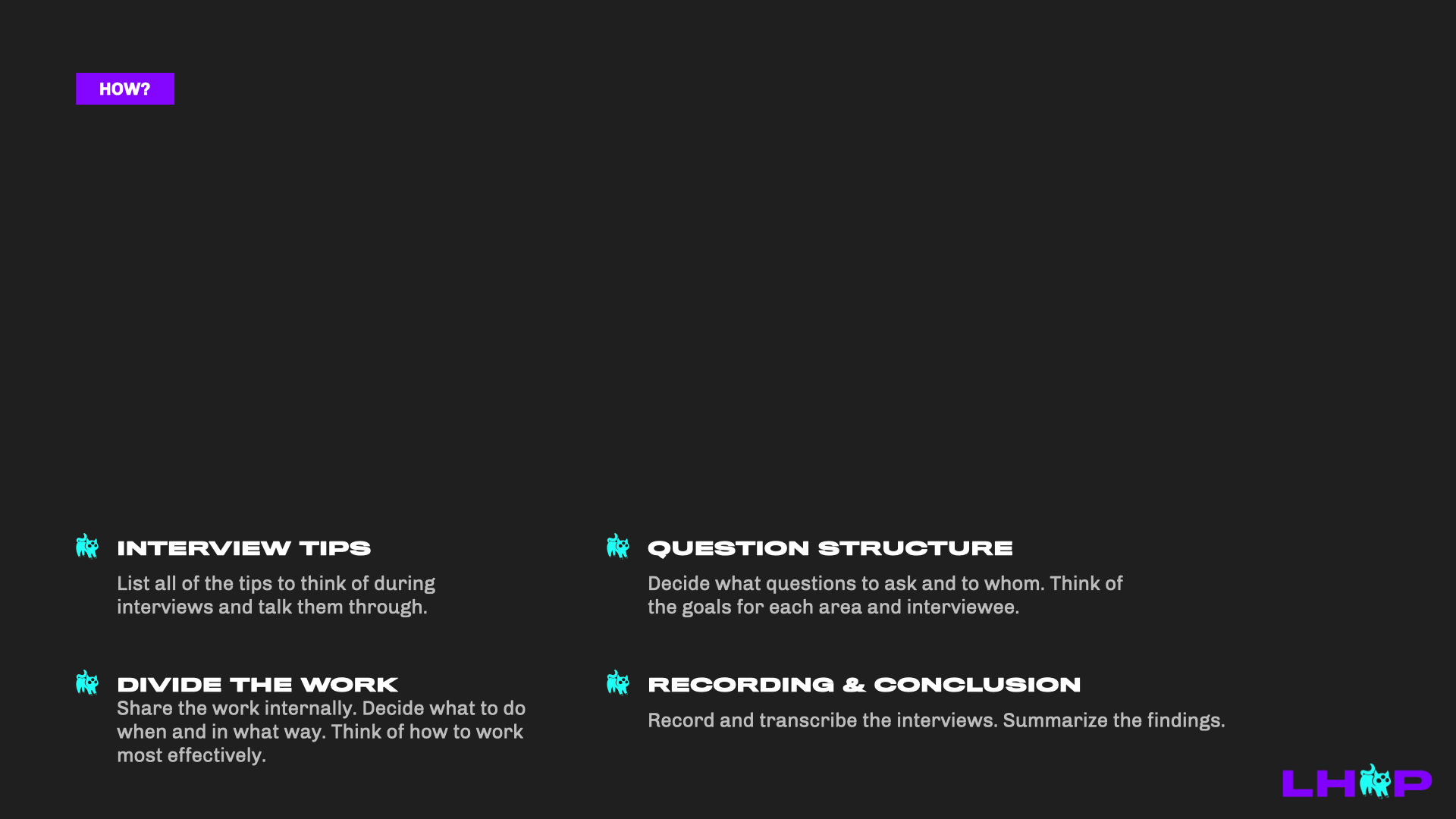
How?
When collaborating with a co-worker, ensure both are prepared with a shared understanding of the client’s expectations, interview approach, and task division for efficiency. A well-planned setup from the start saves time and optimizes teamwork.

Interview tips
Start by creating a comfortable environment where participants feel at ease sharing their thoughts. Ask open-ended questions to encourage detailed responses and avoid leading questions that might bias their answers. Actively listen, observe body language, and take notes or record the session for later analysis. Keep the conversation natural while staying focused on key objectives. Allow pauses for deeper reflection, and be flexible if unexpected insights arise. Finally, express appreciation for the participant’s time and feedback, ensuring they feel valued and heard.
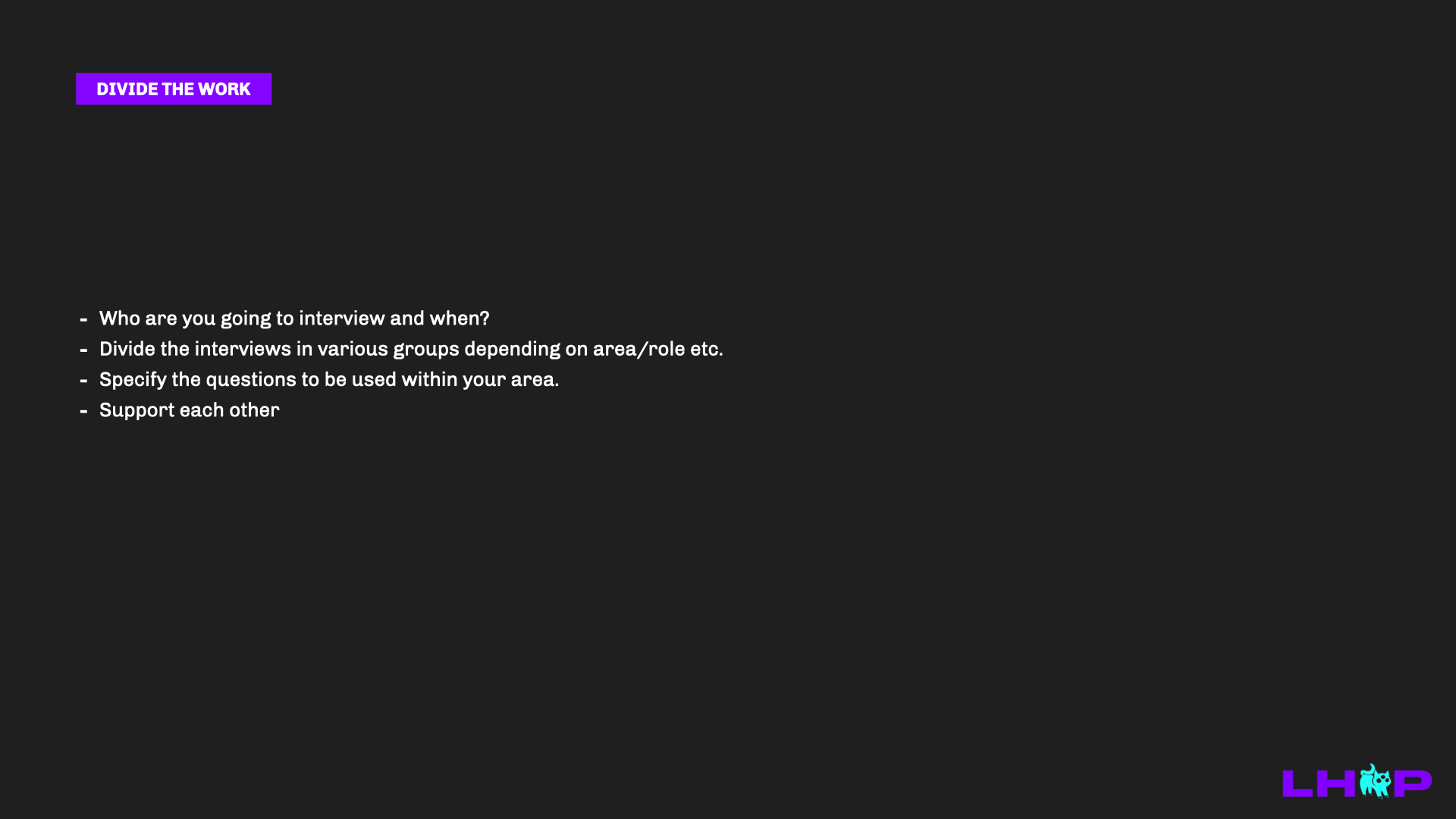
Divide the work
Divide the work
Two colleagues collaborated on this interview project, focusing on two different groups. To streamline the process, each took responsibility for one area, handling its background research and scheduling. The first interview was conducted together at the client’s office, with the designated lead guiding the discussion while the other provided support as needed.
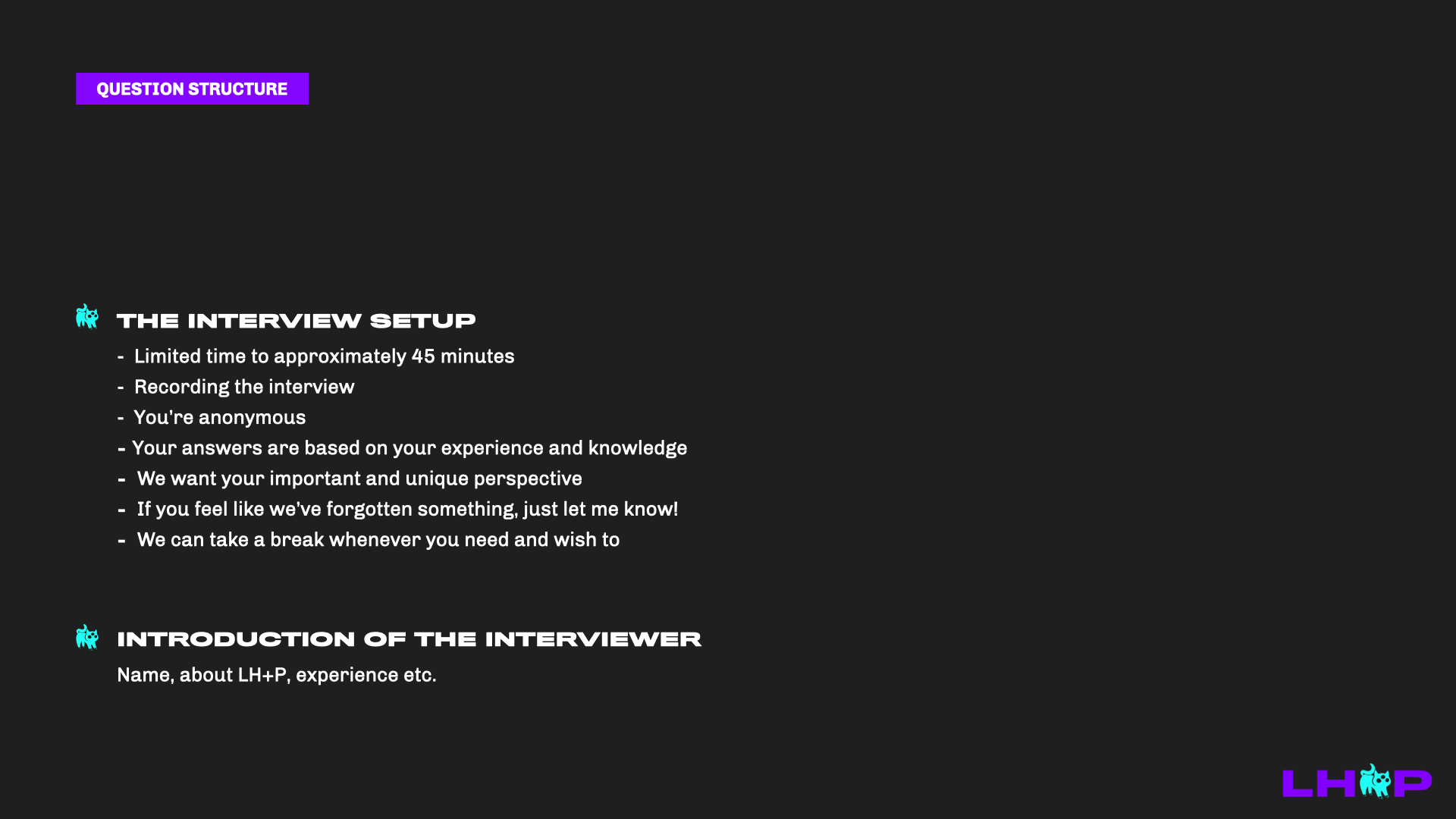
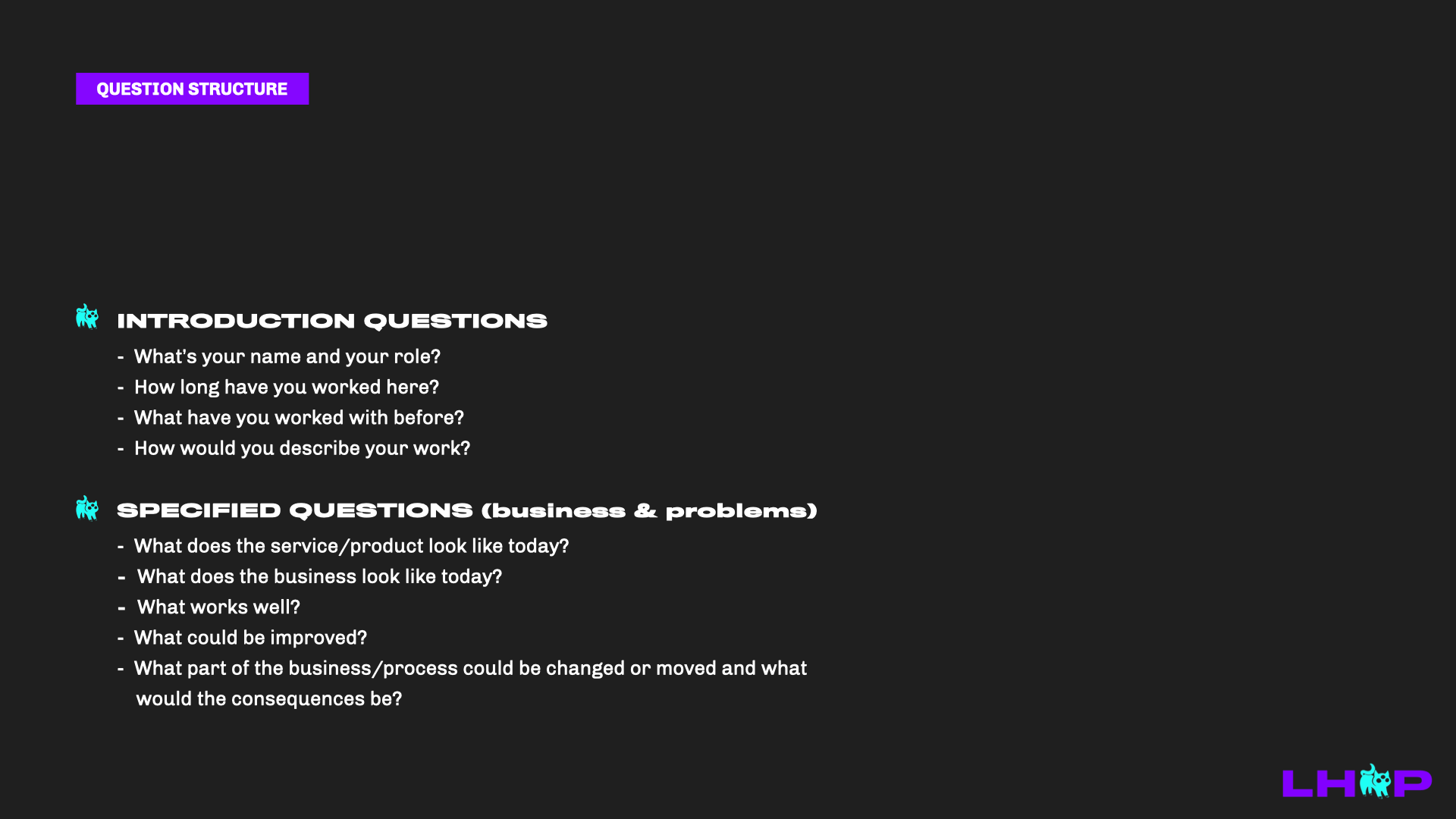
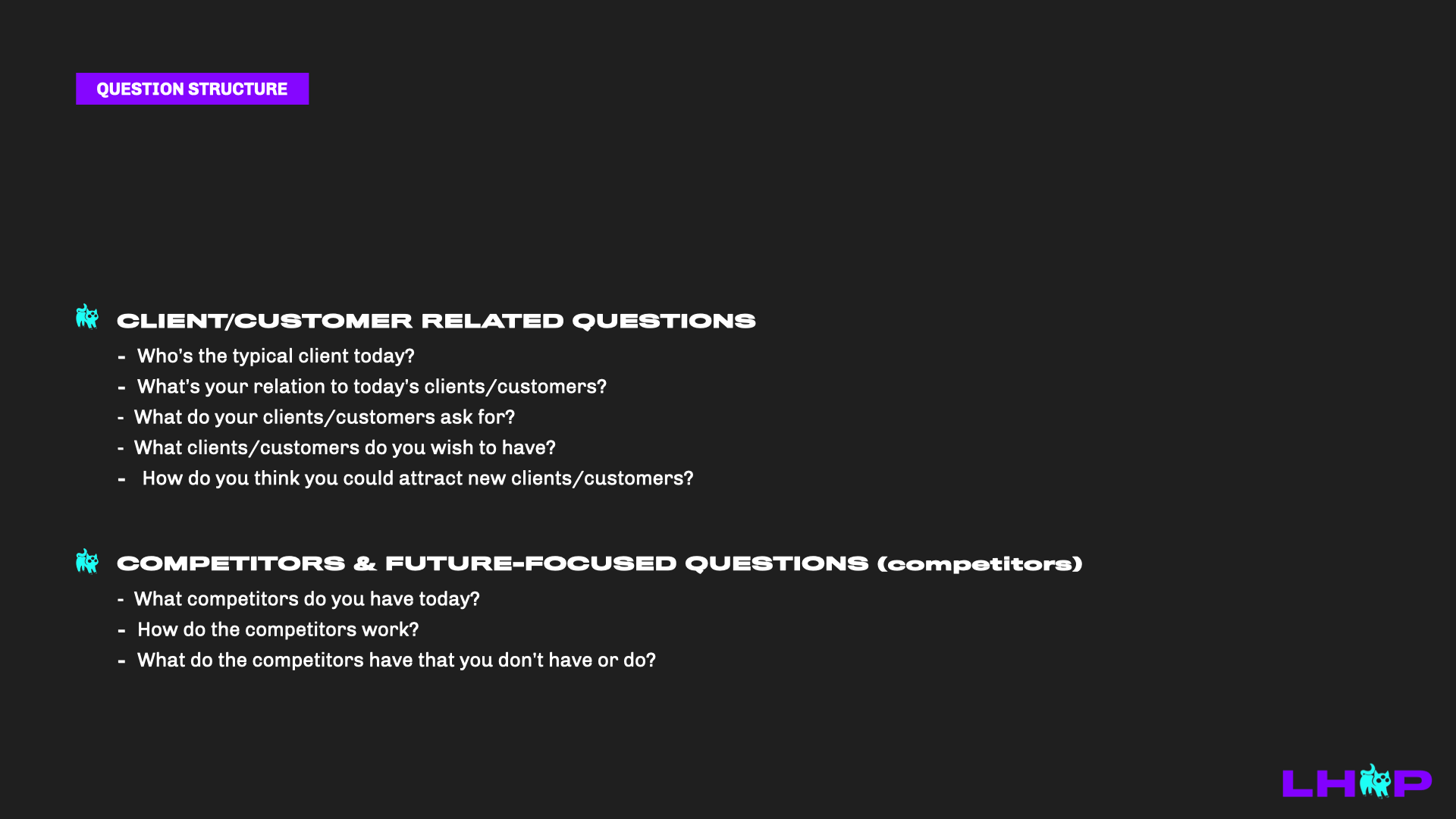
Question structure
The setup included clear information for the interviewee about their rights, expectations from both sides, and the interview process. Ensuring their comfort was the top priority to facilitate open and insightful responses.
The interview began with simple introductory questions before progressing to more specific topics, including business challenges, customer-related insights, and competitor and future-focused inquiries.
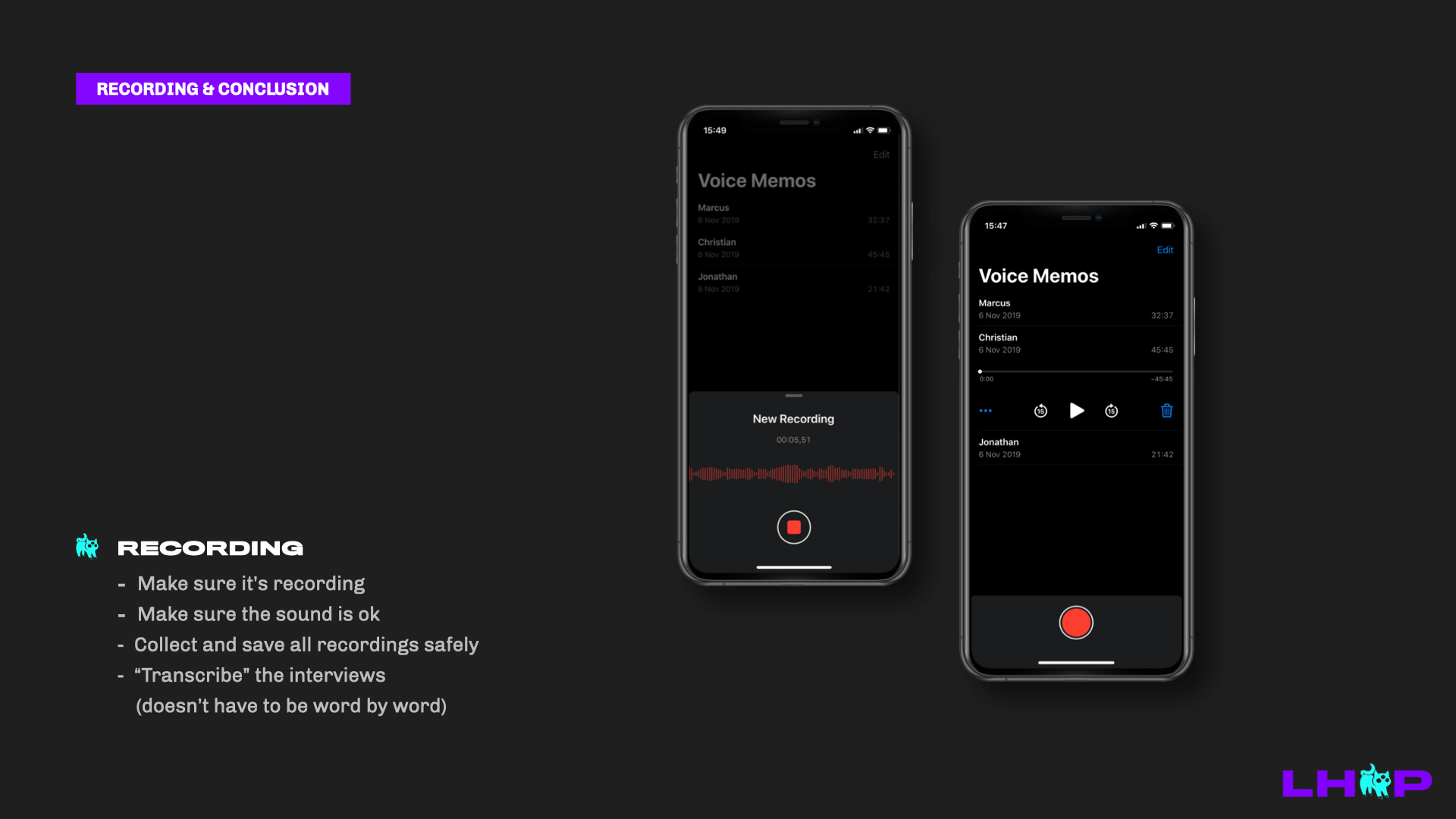
Recording
With permission from the interviewees, the interviews were recorded, allowing for better engagement in the conversation rather than focusing solely on note-taking. The recordings also ensured nothing was missed and could be reviewed later for accuracy.
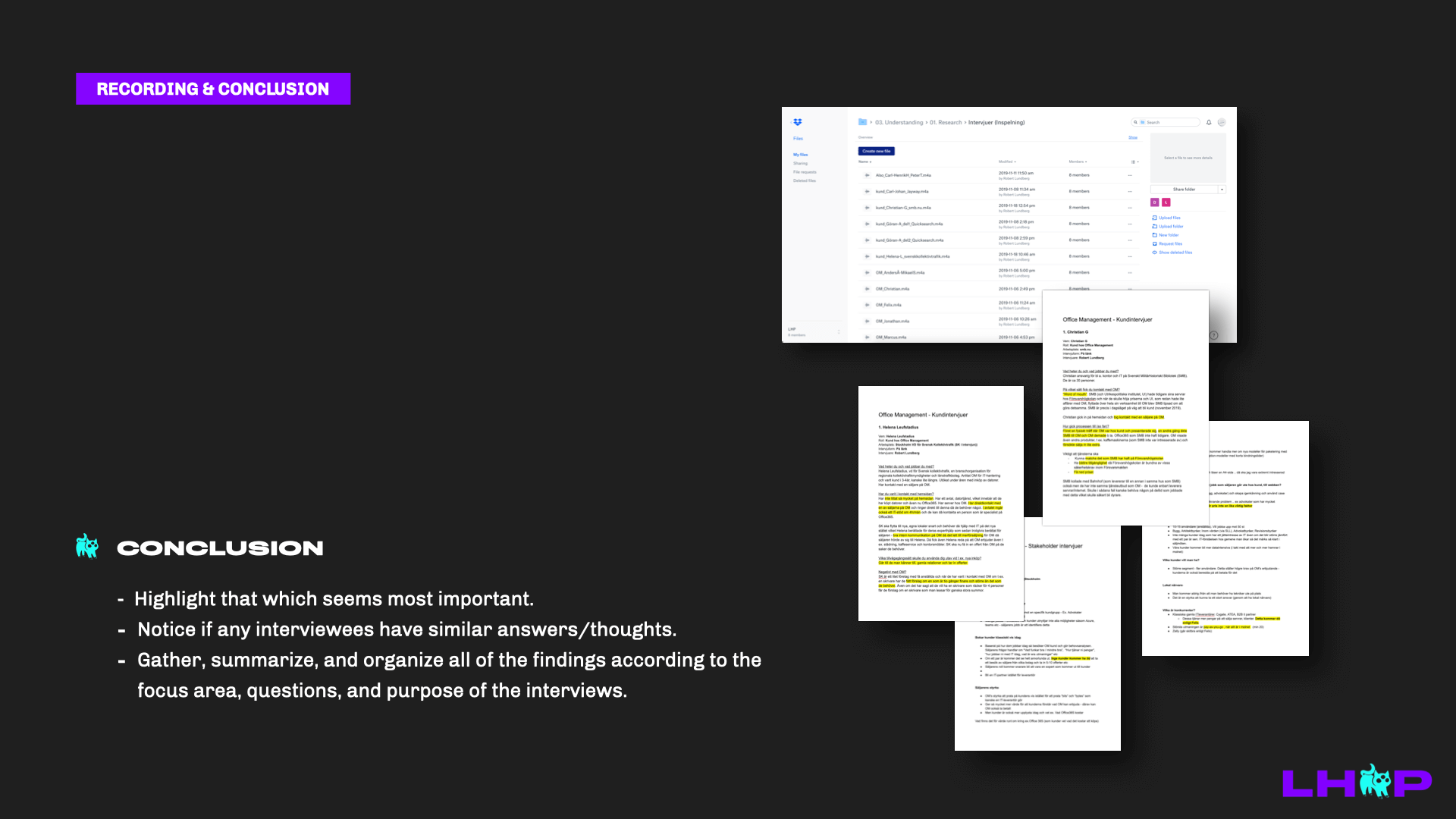
Conclusion
With recordings of all interviews, key answers and findings were summarized rather than fully transcribed. This created structured documentation, making it easier to compare responses and extract insights. A key findings document was then prepared for the client.
© 2025 Lina Eriksson